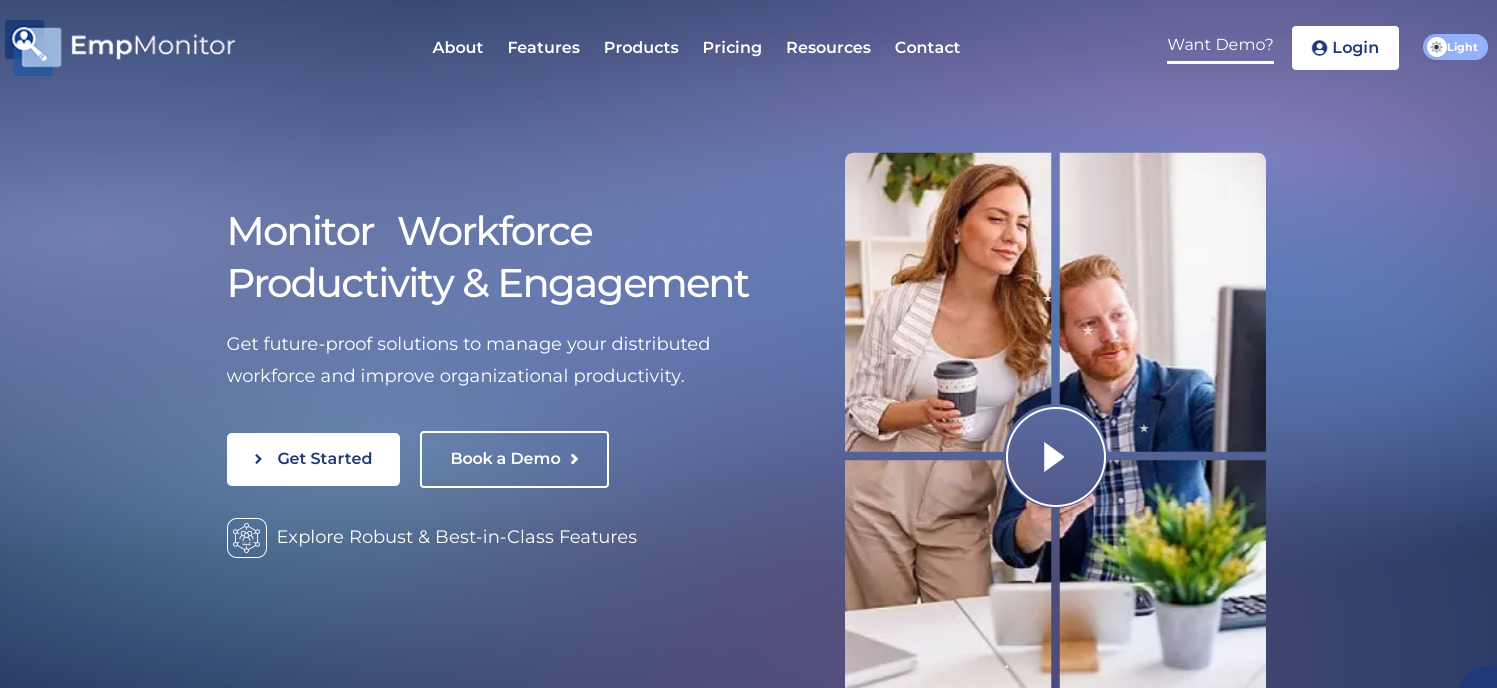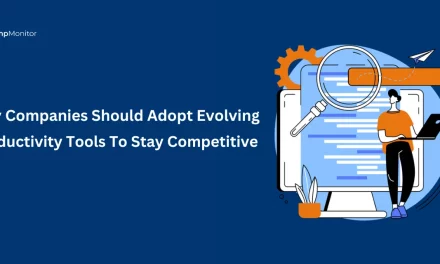In modern workplaces, effective leadership is akin to navigating uncharted territories. Imagine a scenario where you have the responsibility of overseeing a group of diverse professionals, each bringing a unique set of skills and perspectives to the table. This complicated dance of talents requires more than just assigning tasks; it demands a strategic approach, and that’s where the art of workload planning comes into play.
Planning the workload acts as the compass that guides a team through the complexities of their responsibilities, ensuring a harmonious alignment of efforts.
In this discussion, we’ll break down what planning workload entails, how you can manage it in 7 easy steps, and how a thoughtful approach can turn chaos into cohesion.
Listen To The Podcast Now!
What is Workload Planning?
Workload planning involves organizing tasks and responsibilities among members of a team in an efficient manner. It involves assessing the current workload, understanding the nature and scope of tasks, and allocating resources judiciously to ensure maximum productivity.
In practical terms, the best solution for planning of workload and even managing workforce starts with a comprehensive analysis of ongoing tasks, projects, and the resources involved. It includes identifying the specific tasks at hand, estimating the time and resources required for each, and evaluating the current distribution of workload among team members.
By gaining insights into the existing workload landscape, organizations can create a foundation for making informed decisions about resource allocation and task prioritization.
What Does Workload Planning Include?
Before you delve into workforce planning and analytics for managing the workload, you should keep track of what you should include in planning the workload.
Scheduling
Create a detailed plan by mapping out goals and project due dates. The plan is specific, achievable, and adheres to a realistic timeline.
Allocating Ownership and Resources
Assign tasks to specific employees based on their current capacity, strengths, and capabilities. Ensure an equitable distribution of work among team members to prevent overwhelm.
Monitoring Workload
Regularly checking in to assess the effectiveness of the initial plan. Adjusting to changes in project scope means dealing with unexpected situations and making the needed changes.
Proactive Communication
Workload planning includes fostering open communication channels within the team. Encourage team members to provide insights on workload challenges and propose potential improvements.
Flexibility in Planning
Acknowledge that plans may need to evolve in response to changing circumstances. Anticipate potential shifts in workload dynamics and prepare contingency plans.
Utilization of Technology
Utilize technology solutions like EmpMonitor for efficient task and project management. Explore workforce and workload management tools like EmpMonitor to streamline repetitive tasks and improve workflow.
Arranging workloads, as an ongoing and adaptive process, integrates these elements to ensure the effective distribution of tasks. It promotes a work environment that encourages collaboration, proactive adjustments, and continuous improvement.
Workload Planning Strategies In 7 Steps
Efficient workload management strategies are the cornerstone of organizational success, requiring a systematic approach to manage tasks and resources effectively. Here’s a refined guide outlining seven crucial steps for seamless workload adjustment:
Step 1: Assessing Current Workload
In the initial step, break down ongoing projects into granular tasks. It helps you create a comprehensive list of current responsibilities. Estimate the time and resources required for each task, considering factors like complexity and dependencies.
Evaluate the current distribution of tasks among team members, identifying areas of potential overload or underutilization.
Step 2: Prioritizing Tasks and Projects
Establish the significance of prioritizing tasks based on their impact on overall project goals. Utilize frameworks like the Eisenhower Matrix or ABCD method to assign priorities based on urgency and importance.
Step 3: Setting Realistic Goals and Deadlines
For efficient workload management planning, understanding the team’s limitations and capacities becomes vital to avoid over-committing to tasks that may lead to stress. Set deadlines aligned with task scope and complexity to maintain consistent work quality.
Step 4: Resource Allocation and Team Collaboration
Assess human and technological resources, considering skills and expertise. Promote teamwork and cooperation among team members, fostering shared responsibilities.
Step 5: Implementing Technology Solutions
Integrate task management apps and project management software like EmpMonitor to streamline processes. Explore automation and workflow tools, utilizing cloud-based collaboration platforms for real-time updates using this workforce management tool.
EmpMonitor- Workload and Workforce Management
EmpMonitor is an advanced and comprehensive employee productivity monitoring software. The software prioritizes employee health, fosters a healthy work environment, and boosts productivity.
Here are the features of EmpMonitor that assist employers and managers in effective workload planning.
Task and Time Tracking
The time tracking feature of the EmpMonitor monitors and records the time employees spend on specific tasks. This feature helps you to understand how time allocation across various tasks and aids in workload assessment.
Productivity Analytics
EmpMonitor analyzes productivity metrics based on employee activities.It provides insights into task efficiency and areas where workload adjustments may be needed.
Resource Allocation Monitoring
EmpMonitor tracks the allocation of tasks and projects to individual employees. This feature enables managers to ensure a fair distribution of workload based on employee capacity and skills.
Real-time Monitoring
The software allows for real-time monitoring of employee activities during work hours. It provides immediate feedback on ongoing tasks and helps in making timely adjustments to workload distribution.
Project and Task Prioritization
EmpMonitor facilitates the prioritization of projects and tasks. It supports managers in aligning workload with organizational goals. It helps in setting priorities for tasks, which aids in workload planning.
Reports and Analytics
It generates detailed reports and analytics related to employee activities. EmpMonitor Offers data-driven insights into workload patterns, helping in strategic planning and decision-making.
Alerts and Notifications
EmpMonitor sends alerts or notifications for specific events or concerning activities. The software informs managers of potential workload issues.
It’s crucial to note that while employee activity monitoring tools can provide valuable data for workload adjustment and planning. The ethical use of EmpMonitor comes with relevant privacy regulations, which should be a priority.
Step 6: Monitoring and Adjusting Workload
Regularly monitor ongoing tasks and projects, to identify signs of potential overload or areas for improvement. Effective workload planning oriented around conducting team meetings for updates and feedback and establishing individual performance reviews for support and improvement.
Step 7: Learning from Experience and Adapting
Encourage a mindset that views challenges as opportunities for growth, fostering a culture of continuous learning. Remain flexible in workload preparation strategies, adjusting plans based on feedback, changing priorities, and evolving work environments.
By meticulously following these seven steps, organizations can gain the answer to how to navigate workload balance. It also assists in navigating the complexities of workload arrangements or planning, promoting efficiency, achieving optimal results, and sustaining a balanced and dynamic work environment.
Also Read
How To Build An Effective Workload Management System For Your Organization?
Employee Burnout: 7 Tips To Deal With Effective Workforce Management Solutions
How To Streamline Your Personal Workload Management Process
MOSCOW Prioritization Made Simple: A Rich & Thorough Guide
Benefits Of Workload Planning
The planning and management of workload offers a range of benefits that contribute to the overall efficiency, productivity, and well-being of individuals and teams within an organization. Here are some key advantages.
Optimized Productivity
Preparing the workload ensures that tasks are distributed efficiently, preventing overloading and underutilization.
Impact
Optimized productivity results in the effective use of time and resources, leading to the timely completion of tasks and projects.
Enhanced Work Quality
By strategically planning and distributing tasks, individuals can focus on their responsibilities, maintaining a high standard of work quality.
Impact
Improved work quality contributes to the overall success of projects and the organization’s reputation.
Timely Delivery of Project
Workload planning involves setting realistic goals and deadlines, and helping teams manage their time effectively.
Impact
Teams are better positioned to meet project timelines consistently, reducing the risk of delays and ensuring timely project delivery.
Prevention of Burnout
Through workload preparations and adjustments, individuals and teams can avoid excessive workloads that may lead to burnout.
Impact
Preventing burnout enhances employee well-being, job satisfaction, and long-term productivity.
Resource Optimization
Workload adjustments include assessing and allocating resources judiciously.
Impact
Effective resource allocation ensures that human and technological resources are utilized efficiently, avoiding overuse and underutilization.
Improved Communication and Collaboration
Workload planning often involves collaboration and open communication within teams.
Impact
Enhanced communication fosters teamwork, ensures clarity on tasks, and promotes a positive work culture.
Enhanced Employee Satisfaction
Fair workload distribution and realistic goal-setting contribute to employee satisfaction.
Impact
Satisfied employees are more likely to be engaged, motivated, and committed to their roles.
Strategic Decision-Making
Workload preparation and planning provides valuable data for strategic decision-making.
Impact
Informed decisions on resource allocation, project prioritization, and team structure contribute to overall organizational success.
Final Words
Arriving here, initiating workload planning is a proactive, strategic step benefiting the organization, fostering a positive work environment, enhancing employee well-being, and ensuring successful project completion.
In summary, effective workload planning is crucial for organizations aiming for operational excellence and fostering a positive work environment.
Through the strategic allocation of tasks, realistic goal-setting, and continuous monitoring, workload planning brings about a myriad of benefits.
By optimizing productivity and enhancing work quality, workload preparation and adjustment ensure that teams operate at their full potential. Furthermore, it contributes to employee satisfaction, directly impacting engagement and commitment levels. Organizations poised for success in dynamic environments adapt to changing circumstances and make informed decisions based on workload data.















